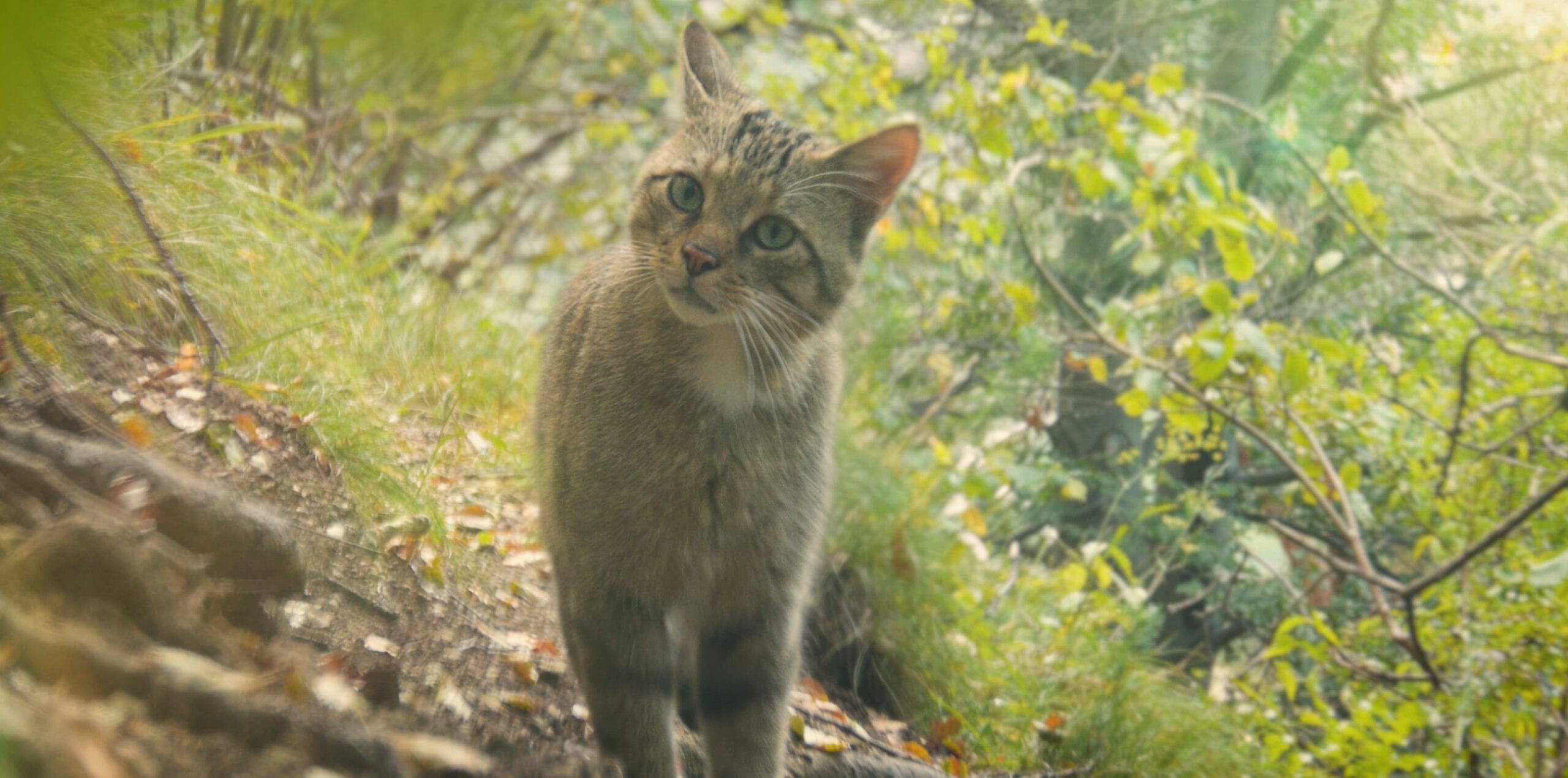The European wildcat lives shy and hidden in our forests. This is what distinguishes it:
- Weight: 2 to 7 kg, the weight varies strongly throughout the year.
- males weigh 5-6 kg and females on average 3 kg
- head-torso length females: 44.5-64.0 cm, males: 52.0-67.0 cm
Behavior: shy and cryptic lifestyle
Natural enemies: wolf, lynx, eagle owl and eagle; for young also foxes and dogs
Habitat and territorial activity
- low disturbance, very structurally rich and large unfragmented deciduous and mixed forests with undergrowth and deadwood, slopes with rocky areas
- avoids open spaces
- Daytime hideouts, resting and littering sites: brushwood piles, hollow trees, hollowed out root bases, tree hollows, windthrows, woodpiles, fox and badger burrows
- clearings, forest edges, windthrow areas, meadows and fields for hunting
- The abundance of prey animals determines the size of the territory. In general, males have larger home ranges of up to 4,000 ha. Females use 300 to 800 ha.
Diet and hunting
- capture of prey
- 80 percent small rodents
- partly also birds, frogs, lizards and insects
Reproduction and raising of the young
- Main mating season: January till March
- gestation period: 63-68 days
- two to four young per litter
- Hiding places often in tree hollows, which are changed regularly
- The young are suckled for four months and from six weeks eat everything the mother brings them
- Young are adult after half a year, sexually mature at one year of age
Threats: roadkill, habitat fragmentation due to traffic and agricultural land lacking shrubbery and trees
Literature
http://felis-lupus.de/wildkatze-1.html
Mölich, Thomas & Klaus, Siegfried. (2003). Die Wildkatze (Felis silvestris) in Thüringen (The wildcat (Felis silvestris) in Thuringia). Landschaftspflege und Naturschutz in Thüringen. 4. 109-134.



